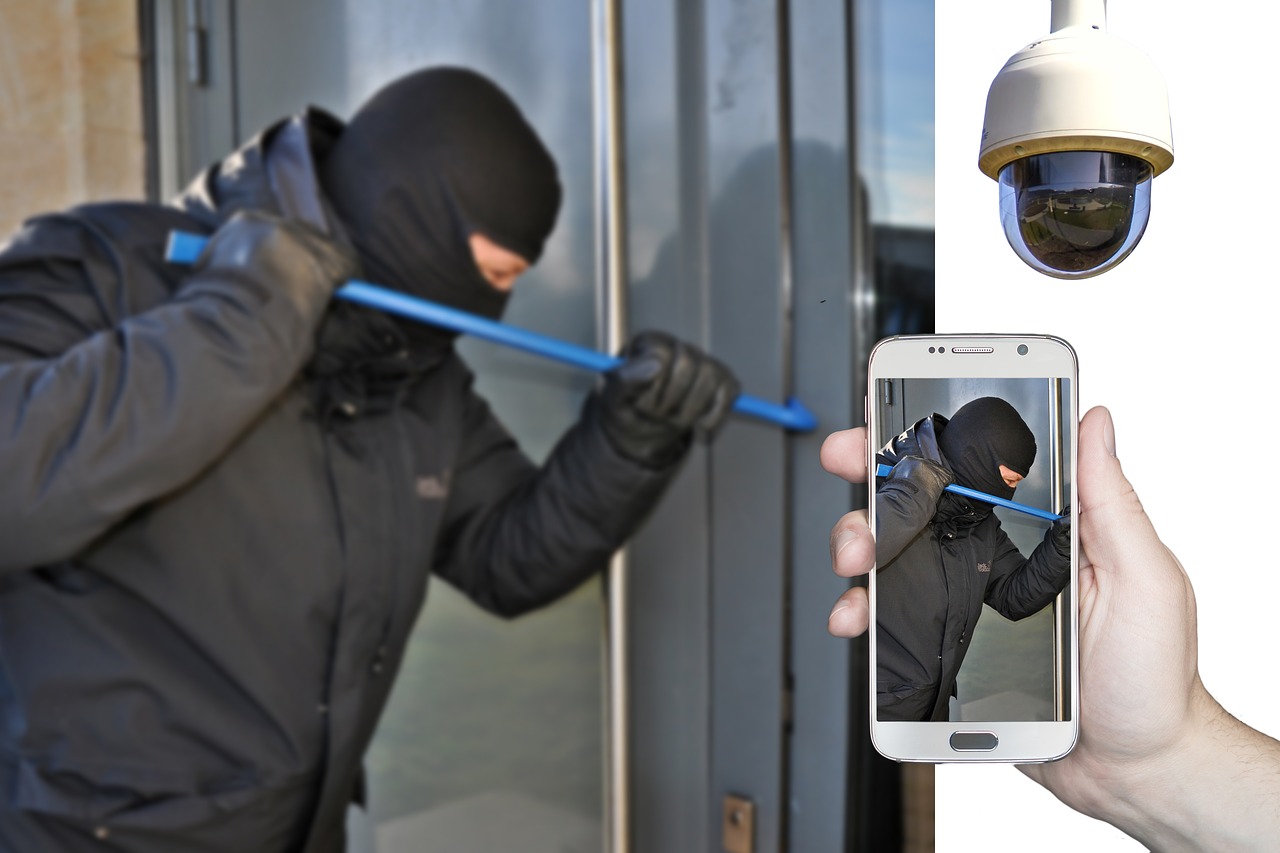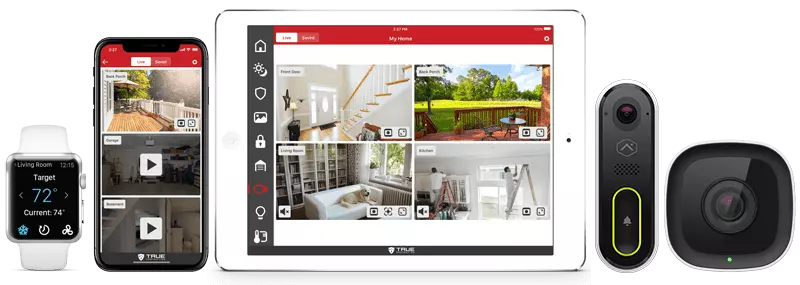- Introduction to Home Security Systems
- Historical Overview of Burglar Deterrence
- Statistics on Burglaries and Home Security
- Types of Home Security Systems
- Technological Advances in Home Security
- Psychological Impact of Visible Security Measures
- Effectiveness of Alarm Systems
- Role of Surveillance Cameras
- Community and Neighborhood Security Programs
- Case Studies of Home Security Successes
- Future Trends in Home Security
Introduction to Home Security Systems

medical emergency
Home security systems are designed to protect residences from invasions and burglaries by creating obstacles and increasing the risk of detection for potential intruders. These systems typically include a combination of barriers, electronic surveillance, and alarms to safeguard property and ensure the safety of residents. Security systems serve multiple purposes, such as detecting unauthorized entry, alerting homeowners and authorities, and deterring criminal activity altogether.
Key components of home security systems include:
- Alarms: These can be audible or silent and are triggered by unauthorized entry, prompting a quick response from the homeowner or monitoring service.
- Surveillance Cameras: These cameras provide continuous or triggered recording of activity around the property, offering evidence in the event of a crime.
- Sensors: Motion detectors, door and window sensors, and glass break detectors are common types of sensors used to detect unauthorized access.
- Control Panels: The central hub where the security system is managed, allowing for arming, disarming, and monitoring of system status.
The deterrence effect of home security systems is supported by several studies. Research indicates that homes without security systems are more likely to be targeted by burglars, as these homes present a lower risk of detection and apprehension. According to the Electronic Security Association (ESA), homes without security systems are approximately 300% more likely to be broken into than those with systems installed.
Benefits of Home Security Systems
There are several key benefits associated with the use of home security systems:
- Deterrence: The presence of alarms, cameras, and other security measures can discourage intruders from attempting a break-in.
- Immediate Response: Alarm systems can prompt an immediate response from homeowners or monitoring services, reducing the time burglars have to commit a crime.
- Evidence Collection: Surveillance cameras provide crucial evidence in identifying and prosecuting offenders.
- Peace of Mind: Knowing that a home is protected by a security system offers significant peace of mind to residents.
Table: Components of Home Security Systems
| Component | Description |
|---|---|
| Alarms | Triggered by unauthorized entry to alert homeowners and monitoring services. |
| Surveillance Cameras | Monitor and record activity, providing evidence if a crime occurs. |
| Sensors | Detect unauthorized access through doors, windows, or other points of entry. |
| Control Panels | Central hub for managing the security system. |
Home security systems represent a crucial tool in the prevention and intervention of residential burglaries, leveraging technology to create safer living environments. By understanding the various components and benefits, homeowners can make informed decisions to effectively protect their properties.
Statistics on Burglaries and Home Security

Burglaries remain a significant concern for homeowners, with data consistently showing that residences without home security systems are more likely to be targeted by burglars. The presence of a security system is a critical deterrent factor, reducing the risk of burglary.
General Statistics on Burglaries
According to data from the FBI’s Uniform Crime Reporting (UCR) Program, there were an estimated 1.1 million burglaries in the United States in 2019. Residential properties accounted for approximately 62.8% of these burglaries. The average dollar loss per burglary offense was $2,661.
Impact of Home Security Systems on Burglary Rates
Research indicates that homes without security systems are up to 300% more likely to be broken into. A study by the Department of Criminal Justice and Criminology at the University of North Carolina at Charlotte found that about 60% of convicted burglars stated the presence of a security system influenced their decision to target another home.
Furthermore, a report by the Electronic Security Association (ESA) revealed that 83.3% of respondents agreed that visible home security systems deter burglars from even attempting a break-in.
Effectiveness of Various Security Measures
Different components of home security systems contribute to deterring burglaries in various ways. Some of the key elements include:
- Alarm Systems: Homes with alarm systems can decrease the likelihood of a burglary by up to 60%, as the loud noise draws unwanted attention.
- Surveillance Cameras: Visible cameras can reduce the risk of burglary by approximately 50%, as they increase the chances of the criminal being caught.
- Security Signs and Stickers: Even the presence of signs and stickers indicating a home security system is in place can dissuade potential burglars.
Geographical Variations and Specific Trends
Crime rates, including burglary rates, can vary significantly based on geographical location. Urban areas tend to have higher burglary rates compared to rural areas. However, the adoption of home security systems in urban regions often contributes to a noticeable reduction in crime rates.
The Bureau of Justice Statistics (BJS) notes that a significant proportion of burglaries occur during the daytime when residents are usually away at work. Therefore, the implementation of home security systems is particularly beneficial during these hours.
Types of Home Security Systems
Home security systems play a crucial role in deterring burglars, and they come in various types to cater to different needs and preferences. The primary types of home security systems include monitored security systems, self-monitored security systems, wireless security systems, and wired security systems.
Monitored security systems are professionally overseen by security service providers. When an alarm is triggered, the monitoring center is notified and can alert the authorities if needed. True Protection, for example, excels in offering customized monitored security systems across its five Texas locations—Austin, San Antonio, Houston, Dallas/Fort Worth, and other areas. Their tailored solutions ensure that both homes and businesses receive the most effective monitoring services available.
Alternatively, self-monitored security systems put the onus on the homeowner. These systems often utilize smartphone apps to notify the owner directly when an alarm is triggered. Homeowners prefer this option for more control and potentially lower costs, though it requires them to take immediate action in an emergency.
Advances in Home Security

True Protection Smart Security Systems
Technological advances have significantly transformed home security systems over recent years. With the integration of smart technologies and the Internet of Things (IoT), modern security solutions provide more comprehensive and interconnected protection for residential properties.
| Feature | Benefit |
|---|---|
| Smart Home Integration | Remote control and increased convenience |
| Advanced Motion Detection | Reduced false alarms and accurate threat detection |
| Wireless Technology | Ease of installation and maintenance |
| AI and Machine Learning | Real-time analysis and instant notifications |
| Biometrics | Higher security and personalized access |
These technological advancements in home security systems have collectively contributed to more reliable and effective protection against burglaries. By incorporating these innovations, homeowners can significantly reduce the risk of unauthorized entry and enhance the overall safety of their residences.
Psychological Impact of Visible Security Measures
Visible security measures, such as alarm systems and surveillance cameras, play an important role in the psychological deterrence of potential burglars. When burglars see these measures, they are often less likely to target a property.
Perceived Risk
Burglar deterrence studies have shown that visible security systems increase the perceived risk associated with committing a burglary. This perception of increased risk stems from several key factors:
- Higher chance of detection: Security cameras and alarm systems make it more likely that a burglar will be detected during their attempt.
- Potential for immediate response: Alarm systems often alert homeowners or security services, which can lead to a rapid response.
- Increased identification risk: Surveillance cameras can capture video footage of the burglar, making it easier for law enforcement to identify and apprehend them.
Study Findings
Research conducted by the Rutgers University School of Criminal Justice found that visible security measures significantly reduce the likelihood of a home being burglarized. The study indicated that homes with security systems are less attractive targets due to the increased effort and risk required for a successful intrusion.
Comparative Data
The following table presents a comparison between homes with visible security measures and homes without any security measures in terms of burglary rates:
| Type of Home | Burglary Rate per 1000 Homes |
|---|---|
| Homes with Visible Security Measures | 8 |
| Homes without Security Measures | 32 |
Behavioral Impact
Burglars often conduct a risk assessment before choosing their targets. Visible security measures tend to discourage burglars from targeting these homes due to the higher likelihood of detection and apprehension. In interviews with convicted burglars, many have admitted that they avoid homes with clear signs of strong security measures such as cameras and alarm systems.
The presence of security measures also impacts the behavior of the community, leading to increased collective vigilance and enhancing the overall security of the neighborhood. Knowing that a nearby residence is well-protected encourages others in the community to adopt similar measures, creating a network of deterrents.
In summary, the psychological impact of visible security measures plays a crucial role in deterring burglars. By increasing the perceived risk and effort associated with a potential burglary, these measures make homes less attractive targets and contribute to overall neighborhood safety.
Effectiveness of Alarm Systems
Alarm systems play a crucial role in deterring burglars and enhancing home security. Numerous studies and reports substantiate the effectiveness of alarm systems in preventing break-ins.
According to a survey conducted by the University of North Carolina at Charlotte, about 60% of convicted burglars indicated that the presence of an alarm would cause them to seek an alternative target. Additionally, alarm systems are known to reduce the likelihood of residential burglaries substantially. A study by the Rutgers University School of Criminal Justice found that neighborhoods with a higher density of alarm systems experienced significantly fewer break-ins.
Alarm systems serve as both a psychological and physical deterrent. The mere presence of window decals and yard signs indicating that a property is protected by an alarm can deter potential intruders. Burglars tend to avoid homes with such indicators, preferring easier, unprotected targets.
Role of Surveillance Cameras
Surveillance cameras play a critical role in home security systems due to their ability to deter criminal behavior and provide valuable evidence in the event of a crime. The presence of cameras can significantly impact the decision-making process of potential burglars.
Impact on Burglars
Studies have shown that visible surveillance cameras can discourage burglars from attempting to break into a property. According to a survey conducted by the University of North Carolina at Charlotte’s Department of Criminal Justice and Criminology, about 60% of convicted burglars indicated that they would seek an alternative target if they noticed cameras or an alarm system in place.
Functionality and Features
Modern surveillance cameras are equipped with various features aimed at enhancing security and simplifying monitoring. Key features include:
- High-Resolution Imaging: Allows for clearer identification of individuals and events.
- Night Vision: Ensures visibility during low-light conditions, crucial for 24/7 surveillance.
- Motion Detection: Triggers recording and alerts when movement is detected, minimizing storage use and alerting homeowners to activity.
- Remote Access: Enables homeowners to view live footage from their cameras via smartphones or computers from anywhere.
Statistical Evidence
The effectiveness of surveillance cameras is supported by various studies and statistical data. The table below summarizes some key statistics:
| Study | Key Findings |
|---|---|
| UNC Charlotte (2013) | 60% of burglars would be deterred by the presence of a camera. |
| Police Foundation (2015) | 6 out of 10 burglars consider video surveillance systems a deterrent. |
The data clearly indicate that surveillance cameras can deter burglars and contribute to the security and safety of homes. By strategically placing cameras around entry points and other vulnerable areas, homeowners can significantly reduce the risk of burglary and enhance their overall security system’s effectiveness.
Community and Neighborhood Security Programs
Community and neighborhood security programs play a crucial role in deterring burglars. These programs rely on cohesive efforts among residents, local law enforcement, and community organizations to enhance overall safety and security.
Neighborhood Watch Programs
One of the most prevalent forms of community security initiatives is the Neighborhood Watch program. These programs involve residents actively monitoring their local area and reporting suspicious activities to law enforcement. According to the National Crime Prevention Council (NCPC), neighborhoods with active watch programs can experience a reduction in crime rates by up to 16%.
Benefits of Community Involvement
Community security programs provide multiple benefits:
- Increased Awareness: Regular meetings and communication channels help residents stay informed about recent criminal activities and preventive measures.
- Enhanced Vigilance: Knowing that neighbors are watchful reduces opportunities for burglars to operate undetected.
- Collaboration with Law Enforcement: Establishing a direct line of communication with local police can result in quicker response times and more efficient investigations.
Community Patrols
In some areas, volunteers participate in community patrols, where they take turns walking or driving around their neighborhoods. This visible presence acts as a deterrent to potential burglars. A study by the U.S. Department of Justice noted that such patrols contribute to a perceptible decrease in criminal activities, provided they are well-organized and consistent.
Enhancing Communication Networks
Effective security programs often utilize modern communication tools. Platforms like social media groups, messaging apps, and dedicated websites ensure timely dissemination of information. The Nextdoor app, for instance, allows neighbors to share safety tips, report suspicious activities, and alert each other about potential dangers, fostering a collective sense of responsibility and vigilance.
Designing Safer Neighborhoods
Residents can also participate in environmental design strategies to make their neighborhood less appealing to criminals. This includes measures like:
- Improved street lighting
- Maintaining clear sight lines by trimming overgrown bushes and trees
- Installing neighborhood entry signs that promote awareness of active surveillance
Such changes enhance natural surveillance and reduce hiding spots for potential intruders.
Conclusion
Overall, community and neighborhood security programs are vital in creating a safer environment. By fostering cooperation among residents and enhancing collaboration with law enforcement, these initiatives significantly contribute to reducing burglary rates and improving the quality of life for all members of the community.
Case Studies of Home Security Successes
The effectiveness of home security systems can be illustrated through various documented case studies. These real-life examples provide valuable insights into how different security measures have successfully deterred burglars and protected homes.
One significant study conducted by Rutgers University in 2009 analyzed the impact of residential burglar alarm systems on neighborhood crime rates. Researchers found that homes equipped with alarm systems were significantly less likely to be targeted by burglars. The study concluded that alarm systems not only protected individual homes but also had a spillover effect, reducing crime in the surrounding areas.
A table summarizing some of the key findings from the Rutgers study is presented below:
| Key Finding | Details |
|---|---|
| Reduction in Burglary Rate | Homes with alarm systems had a 60% lower burglary rate compared to homes without such systems. |
| Neighborhood Impact | Neighborhoods with a higher density of alarm systems experienced overall lower crime rates. |
Another relevant study by the University of North Carolina at Charlotte in 2013 involved interviews with incarcerated burglars. The findings indicated that visible security measures such as alarm systems, surveillance cameras, and security signage acted as strong deterrence factors. Burglars admitted that they were more likely to avoid homes where such measures were in place.
In the United Kingdom, the Home Office conducted research that showed properties equipped with closed-circuit television (CCTV) systems were less likely to be burglarized. The presence of cameras and visible signage informing potential intruders of surveillance significantly increased the perceived risk of getting caught, thus deterring criminal activities.
Notably, the use of smart home security systems has also shown promising results in crime prevention. Real-time alerts and remote access to home monitoring systems allow homeowners to take immediate action and notify authorities, further decreasing the likelihood of successful burglaries.
These case studies highlight the substantial role that home security systems play in preventing burglaries. By implementing various security measures, homeowners can significantly enhance the safety and security of their properties.
Future Trends in Home Security
As technology continues to advance, future trends in home security are expected to evolve significantly. These upcoming technologies and trends aim to enhance the efficiency, convenience, and overall effectiveness of home security systems.
Integration with Smart Home Devices
The integration of home security systems with smart home devices is a major trend. This connectivity allows users to control and monitor their security systems through centralized platforms such as smartphones or voice-activated assistants like Amazon’s Alexa and Google Assistant. These integrations can lead to more responsive and customizable security measures.
- Smart locks
- Automated lighting
- Connected thermostats
- AI-driven surveillance cameras
Artificial Intelligence and Machine Learning
Artificial Intelligence (AI) and Machine Learning (ML) are playing increasingly significant roles in home security. These technologies enable security systems to learn from patterns detected over time, facilitating the identification of unusual activities and reducing false alarms.
For example, AI can differentiate between a family member entering the home and a potential intruder, improving both security and convenience for the household.
Cloud-Based Solutions
Cloud-based solutions are becoming more prevalent in home security systems. These technologies allow for remote storage of video footage and system data, enabling homeowners to access information from anywhere. This trend also promotes scalability and simplifies software updates, ensuring that security systems remain up-to-date with the latest features and fixes.
Data Privacy and Cybersecurity
As home security systems become more interconnected and reliant on data exchange, ensuring data privacy and robust cybersecurity measures are critical. Manufacturers are focusing on building systems with enhanced encryption, secure data transmission protocols, and frequent security updates to mitigate vulnerabilities.
| Future Trend | Impact on Home Security |
|---|---|
| Integration with Smart Home Devices | Increased control and customization; enhanced system responsiveness |
| AI and Machine Learning | Improved detection accuracy; reduced false alarms |
| Cloud-Based Solutions | Remote access; scalable storage; simplified updates |
| Data Privacy and Cybersecurity | Protection of personal data; prevention of unauthorized access |
Overall, future trends in home security focus on enhancing integration, leveraging advanced technologies, and addressing new challenges in cybersecurity. As these trends become more mainstream, they will likely provide homeowners with greater peace of mind and more effective deterrents against burglaries.

